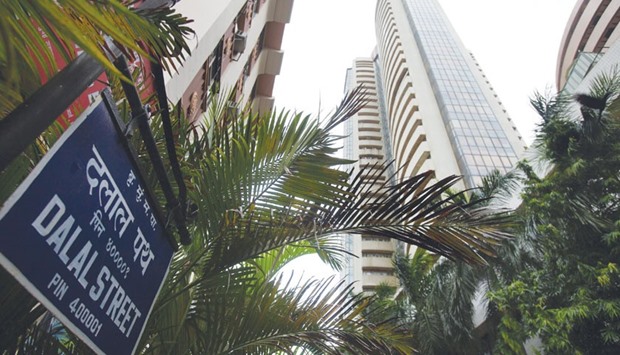The worst-performing stocks in India last year are about to make a comeback in 2016.
So say Ashburton Investments and Birla Sunlife Asset Management Co, who favour large-cap shares over smaller peers due to attractive valuations and expectations foreign inflows will pick up. The S&P BSE Sensex of the nation’s biggest companies fell 5% in 2015, compared with gains of at least 6% for gauges of mid and small-cap shares.
“Looking at relative valuations, the large-cap space is where we are focused on,” said Jonathan Schiessl, UK-based head of equities at Ashburton, which oversees $12bn. “Large-cap stocks have borne the brunt of emerging-markets related selling by foreign investors.” In June, Schiessl said he favoured Indian equities over China stocks.
The Shanghai Composite Index has since plunged 33% versus the 5.8% drop in the Sensex.
The Sensex trades at 20 times reported earnings, the cheapest in three years relative to the S&P BSE MidCap Index, which is valued at 26 times. The S&P BSE small-cap gauge has a multiple of 59. Overseas investors were net sellers of Indian equities in the second half of last year as Prime Minister Narendra Modi struggled to push much-needed reforms through parliament and the prospect of higher borrowing costs in the US spurred a shift toward American assets from developing nations.
Bharat Heavy Electricals was the biggest decliner among the 30 Sensex stocks in 2015 amid sluggish order inflows for power equipment. Tumbling commodity prices weighed on materials producers including Tata Steel and Oil & Natural Gas Corp, while State Bank of India and ICICI Bank slumped more than 25% amid concern about the banking sector’s exposure to loans given to metal makers.
Sentiment towards emerging-market assets turned more bearish last year as a slowdown in China fuelled the biggest retreat in raw materials prices since 2008 just as the Federal Reserve ended its zero interest-rate policy. The MSCI Emerging Markets Index retreated 17% in 2015 as global funds pulled a total $10.8bn from South Korea, Thailand, Indonesia and the Philippines. “With the Fed rate liftoff out of the way, overseas investors will return to India because of better growth prospects relative to other emerging markets,” Sampath Reddy, chief investment officer at Bajaj Allianz Life Insurance Co, which has $6.6bn in assets, said by phone from Pune, near Mumbai. “The wide valuation gap between the large and mid-caps won’t last for long.”
There are signs foreign funds are already coming back. India lured the only overseas inflows among eight Asian markets tracked by Bloomberg in December. The country’s economy is forecast by the government to expand 7% to 7.5% in the year through March, among the fastest in the world. Mid-cap stocks may still outperform this year as domestic investors look for companies whose earnings are tied to the local economy, according to Vinay Paharia, a fund manager at Religare Invesco Mutual Fund.
Mutual funds bought $10.2bn of shares last year, the most since 2008, spurring gains in companies that build roads, offer financial services and operate movie theatres and television channels.
“There is a wide bouquet of stocks to choose from and hence the potential to generate alpha is much higher for a midcap fund,” said Mumbai-based Paharia, whose Religare Mid & Small Cap Fund has returned 30% annually over the past five years through 2015.
Fading enthusiasm for Modi may also deter foreign investors from returning in significant numbers. Overseas inflows totalled $3.3bn last year, down from $16.1bn in 2014 when he swept into office with the biggest mandate in three decades.
Bills on implementing a national sales tax and a new bankruptcy code are stalled after the Indian National Congress and allies thwarted functioning of the legislature. Modi’s economic agenda is at the mercy of the opposition in the upper house, where his party lacks majority.
Still, some large-cap stocks are too cheap to pass up, says Mahesh Patil, co-chief investment officer at Birla Sunlife, which has $20bn in assets.
Oil & Natural Gas, the nation’s largest state-run explorer, State Bank and Tata Motors, owner of Jaguar Land Rover, are valued at less than 10 times estimated earnings, data compiled by Bloomberg show.
Twenty five of the 84 stocks in the mid-cap index trade at between 25 and 105 times estimated profits. “Given the valuation differential and the uncertainty around us, I’d be more inclined toward large caps,” Patil said in an interview in Mumbai. “If foreign fund flows reverse, large caps will fare better.”

The Bombay Stock Exchange (right) is seen on the Dalal Street in Mumbai. The S&P BSE Sensex of the nation’s biggest companies fell 5% in 2015, compared with gains of at least 6% for gauges of mid and small-cap shares.


